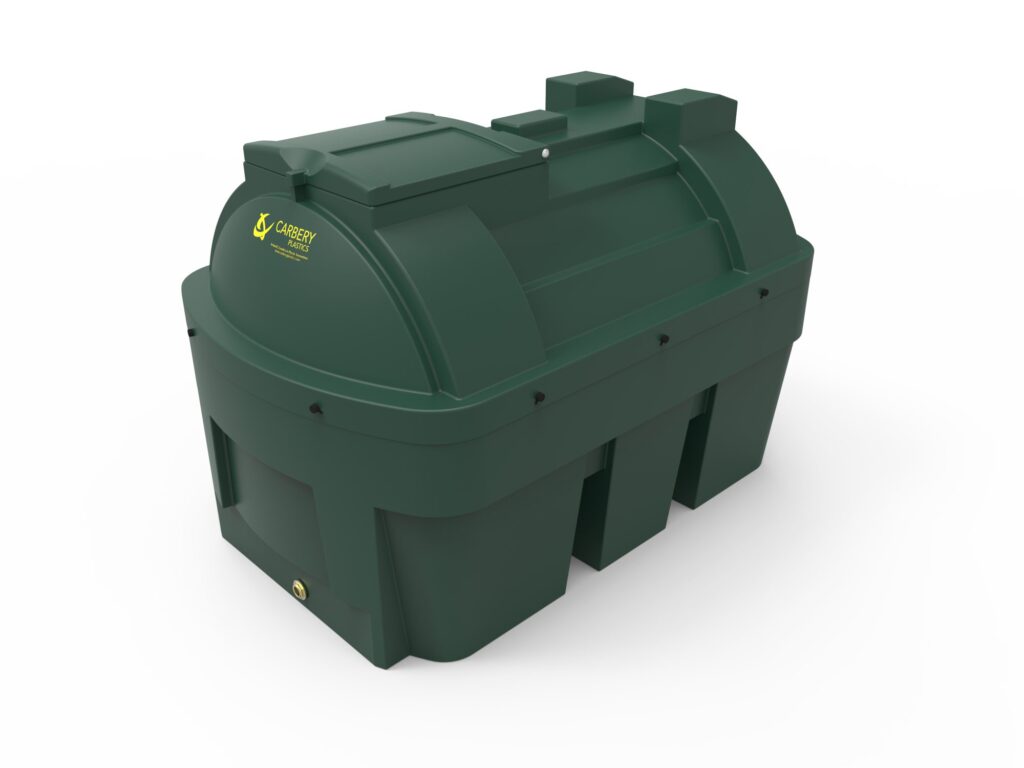With robust properties, oil tanks are designed and engineered to last a long time. However, the time will come when they need to be replaced. The oil tank replacement cost can be a significant investment for UK homeowners or domestic businesses that rely on heating oil systems.
This article will break down the oil tank replacement costs, including factors influencing the price and additional expenses. We will also offer tips for budgeting and finding the best value when replacing an oil tank. This comprehensive guide will help you understand the cost of replacing an oil tank.
How often do I need to replace my oil tank?
The good news is that you will not need to replace your oil tank often. Although different oil tank types have different lifespans, they are all designed and engineered to last several years.
Steel oil tanks often come out on top when it comes to longevity. Made from high-quality mild steel, these tanks can endure extreme temperatures and resist damage from sharp objects or heavy machinery. They are designed to last 20 years, but often exceed that lifespan with regular maintenance.Plastic oil tanks also have exceptional durability. This is largely because they are made from UV-stabilised, corrosion-resistant polyethylene. On average, a well-maintained plastic oil storage tank can last 15 to 20 years. An oil tank replacement cost is significant, but the exceptional durability makes it worthwhile.
Signs you need an oil tank replacement
You should check your oil tank regularly and look for signs of damage and wear. There are several signs your tank is ready for a replacement. These can include, but are not limited to:
- Rust and corrosion: Older tanks are more prone to rust and corrosion. Look for signs like pitting, flaking, or discolouration, which could mean the tank is starting to degrade and might lead to leaks.
- Oil leaks: Older tanks are more likely to leak, especially if your tank is a single skin oil tank. Even pinhole leaks caused by internal corrosion can cause big headaches. Check for condensation on the tank, sagging legs, or clogs in the fill or vent caps. These could all point to potential problems.
- Dents: If you notice a dent, it’s easy to dismiss it. They might seem like a small issue, but they can weaken the tank and make it more likely to fail.
- Weather damage: Look for signs of weather damage, such as rust from the rain or discolouration from direct sunlight.
- General age: Oil tanks generally last about 15-20 years, depending on the oil tank type, so checking the manufacturing date can provide good insight.

How much does an oil tank replacement cost?
The price of replacing an oil tank can vary considerably, but it’s usually between £1,500 – £4,000. This price covers the new oil tank cost, removing the existing tank, making modifications to the base, and installing the new tank.
Factors that affect the oil tank replacement cost
Several factors will affect the cost of replacing an oil tank. These include the tank size, the material you opt for (steel or plastic), and the complexity of installation.
Tank size
This is the biggest influential factor when it comes to the new oil tank cost. Our oil tanks range from 650 litres to 2500 litres. The 650 litre bunded oil tank costs £1,075.99, whereas this 2500 litre bunded oil tank costs £1,615.99.
Tank material
Steel tanks are typically more expensive than plastic tanks, though a steel tank is more durable. Plastic tanks are usually cheaper, offering a budget-friendly option. If you’re unsure whether to go for steel or plastic, check out our guide that compares the two.
Bunded or single skin
A single skin oil tank is typically cheaper than a bunded tank due to the amount of material used. Though there are positives and negatives to choosing a bunded or single skin tank, check out our guide if you’re trying to decide between them. There’s a high chance you will need to use a bunded tank to comply with oil storage regulations.

Installation complexity
Installation complexity massively affects the oil tank replacement cost. There are several reasons for this fluctuation when it comes to installation.
- Location of the tank: The tank might be hard to reach and may require heavy machinery to fit into place. You should also consider how the old tank can be removed. On the other hand, the location might be easier to reach, reducing labour costs.
- Base preparation: As you are replacing an oil tank, there should already be a base. But it might need some tweaks depending on its condition. A solid, level base is important.
- Pipework and fittings: You might need to upgrade or replace the pipework, which could add a significant cost.
Additional expenses when calculating how much a new oil tank costs
There can also be some hidden costs depending on your specific circumstances. These can include, but are not limited to:
- Delivery costs
- The cost to transfer oil
- Landscaping and repairs
- Permits and inspections
Practical tips for budgeting and finding the best value for an oil tank
Following the practical tips should make the cost of replacing an oil tank easier to swallow.
- Get multiple quotes: You can carry out the installation yourself, but it’s best to use OFTEC-registered installers. Compare at least three different quotes.
- Choose the right tank size: Avoid overspending on an oversized tank.
- Opt for plastic tanks: If you’re on a budget, plastic tanks are cost-effective and durable. This can help with the overall cost of replacing an oil tank.
- Plan for maintenance: Regular inspections and cleaning can help extend the tank’s lifespan, meaning you don’t need to worry about another replacement for a long time.
We have a large selection of different oil tanks to suit your needs, so shop our extensive collection today. If you need any advice on choosing the right oil tank for you, our friendly team is on hand and ready to help. Just get in touch.

